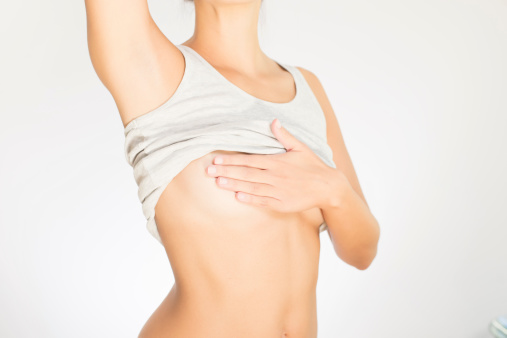
Guide for breast self-exam
Checking your breasts on a periodic basis is a good method for detecting any anomaly
Even though 75% of nodules in the breasts are benign, breast cancer is still the most frequent type of cancer among women around the world. This is why breast self-examination is of vital importance to prevent the disease.
According to the World Health Organisation “early detection in order to improve the prognosis and survival in cases of breast cancer is still the cornerstone in the fight against this type of cancer”.
In addition, the WHO has said that breast self-examination helps empower women who take responsibility for their own health. Experts recommend checking your breast periodically in order to raise awareness in a situation of risk.
Breast examination, step by step
When you explore the breasts, above all, you should keep in mind contour and size in the breast tissue as well as any change you note in the skin and in the nipple (discharge, lumps or dimpling).
1. Size and aspect
Stand in front of a mirror with your arms at your sides. Inspect the skin to see if there is swelling anywhere (nodules) or dimpling, check for size. Check the nipple, if it is inverted, retracted or swollen. Then, rest your hands on your hips and repeat the inspection. Last of all, place your hands at the back of your neck and repeat the procedure.
2. Circular probe
With your left hand behind your head, examine the breast on the same side with your right hand: imagine that the breast is the face of a clock, place your hand on 12 o’ clock, then with your fingers apply some pressure and move around in a circle feeling for any lumps or thickening. Do the same movement at 1 o’ clock, then 2 o’ clock and so on until you have covered all the hours of the clock.
3. Feeling the nipple
Place your fingers on 12 o’ clock and apply a little pressure to the nipple this time. Make concentric clockwise movements. Make increasingly smaller circles until you reach the nipple. Do you feel any hard lumps? Check to see if there is any discharge when you squeeze (it could be a cyst).
4. Armpit
Continue the examination on your side, near the armpit, at the chest muscle where there is also breast tissue. When you have finished, repeat the same steps for the right breast, using your left hand.
Although most lumps found are not malign, if you do discover one during your breast self-exam, call your doctor.
This post is also available in: Italian
